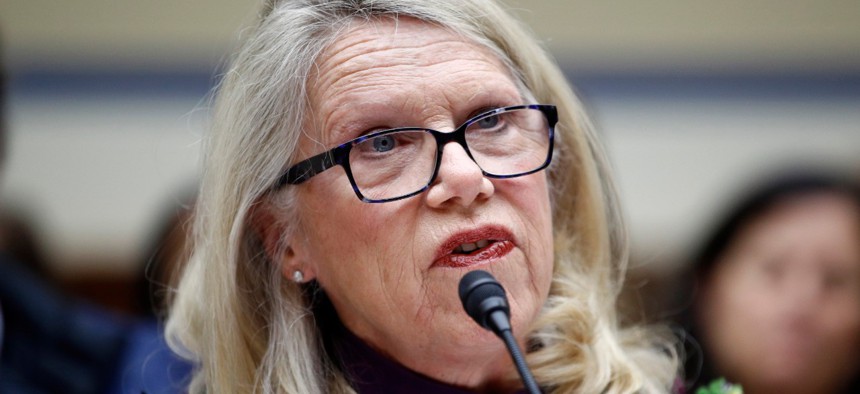
Rep. Carol Miller, R-W.Va., is a co-sponsor of a bill to fix the parental leave law so that it applies to all federal employees. Patrick Semansky/AP
OPM, Lawmakers Propose Fixes to New Paid Parental Leave Law
The effort to ensure all federal employees have access to up to 12 weeks of paid time off following the birth, adoption or foster placement of a child now has bipartisan support.
The push to ensure that all federal workers have access to the government’s newly enacted paid parental leave law now has bipartisan support, as the White House and lawmakers in both parties have proposed technical fixes to the law.
Last December, Congress approved providing up to 12 weeks of paid leave to federal workers following the birth, adoption or foster placement of a new child as part of the 2020 National Defense Authorization Act. The benefit will become available to employees beginning in October, the Office of Personnel Management has said.
But shortly after the bill’s passage, lawmakers and federal employee groups realized it did not cover all federal workers. Although all employees covered under Title 5 and Transportation Security Administration airport screeners were included in the original measure, other workers at TSA and those hired under different authorities, like Veterans Affairs medical workers covered by Title 38, would not be guaranteed paid parental leave.
Late last year, Senate Democrats attempted to approve a fix to ensure the benefit was available to all federal workers, but Sen. Pat Toomey, R-Penn., blocked the measure. Now, however, it appears there is bipartisan support for the measure.
On Thursday, House Oversight and Reform Committee Chairwoman Rep. Carolyn Maloney, D-N.Y., who has spearheaded the effort to provide paid parental leave for years, and Rep. Carol Miller, R-W.Va., proposed legislation (H.R. 5885) to expand the paid leave policy to include employees at the Federal Aviation Administration, the Veterans Affairs Department, the District of Columbia courts and public defender’s office, the White House and TSA, as well as Article 1 judges.
“Because we passed the Federal Employee Paid Leave Act earlier this year, more than 2 million federal employees received a guarantee of 12 weeks paid leave for the birth, fostering or adoption of a child,” Maloney said. “The legislation we are introducing today will ensure that even more federal employees no longer need to choose between their paychecks or being home with their new child.”
“The legislation introduced today fills remaining gaps in the Federal Employee Paid Leave Act, and is a crucial step in ensuring federal employees are afforded the flexibility needed to start a family,” Miller said.
It appears the White House is also on board with instituting a fix, at least to some extent. In its fiscal 2020 budget justification, the Office of Personnel Management also proposed legislation expanding the program to all federal workers, though there are strings attached.
One new limitation OPM floated would cap the amount of paid leave at 12 weeks per “given child,” meaning a set of parents who are both federal employees could only take a combined 12 weeks after they have or adopt a child.
“This would simplify administration, provide a reasonable limit on the amount of paid parental leave that may be used in connection with the birth/placement of a child, and be consistent with the objective of allowing parents to bond with a new child,” OPM wrote.
OPM also suggested providing a vague set of “limitations” on the use of paid parental leave when it comes to foster child placements.
“This change recognizes that, in some cases, foster care placements may be designed to be for temporary periods of less than one year, which undermines the justification for paid parental leave to allow for long-term bonding with a child,” the agency wrote.







